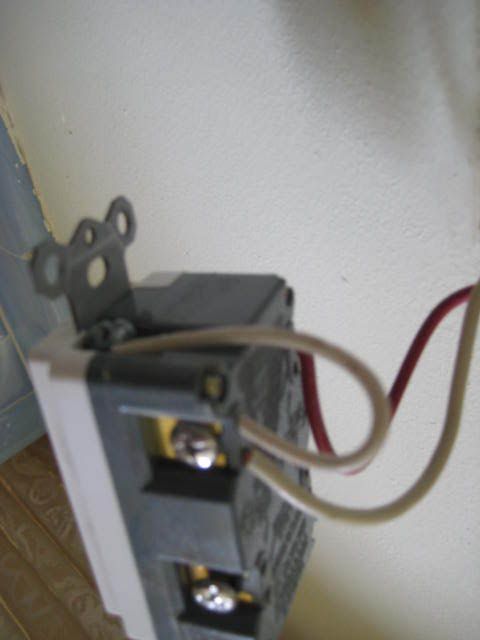I will follow up and try to find this incorrect install. Thanks for the help!
Let us know what you find.
I will follow up and try to find this incorrect install. Thanks for the help!
Tieing the neutral and ground together at a device to make it appear it's grounded when using a plug-in tester.

An illegal neutral to ground bond will result in a reading of zero volts between the neutral and ground, not the 50 volts that the OP has. This is either an open neutral or an ungrounded system.
A friend of mine's son was electrocuted because somebody did that but had the wires reversed. So the ground was hot.
He plugged in two guitars to two different amplifiers into two different receptacles. The strings on one guitar were grounded and the strings on the other were hot. He grabbed both guitars by their necks and immediately his grip tightened on the necks of each guitars as he was electrocuted. He fell to the ground and by the grace of whatever being you worship he accidentally ended up kicking one of the plugs out of the wall to de-energize one of the guitars.
I took apart the receptacles and it looked like you couldn't identify which wire was the hot and there was no ground. So the hot went to both the neutral terminal and the ground terminal, while the neutral went to the hot terminal. The kid was lucky.
"120v from hot to nut. 70v from hot to ground. 50v from nut to ground."
If these are the readings.. possibly there is voltage being applied to the equipment ground somewhere. Let me explain my thinking...
120v from hot to neutral = normal.
70v from hot to equipment ground = 50v on the equipment ground.
50v from neutral to ground = 50v on the equipment ground.
If it were a jumped neutral to the ground terminal of the device there would be no potential voltage difference between the neutral and equipment ground and that reading would be 0 volts. Maybe check for a screw through the cable or faulty ground on equipment plugged in on the circuit or something that is causing voltage to be applied to the equipment ground.
Good luck and let us know what you find.
Yup, bootlegs with loose or opens can produce some crazy readings, 40 plus years of checking and repairing hack work, let's you see the dark side of electrical work.
so i take it we work in the light side of electrical work? :smile:
Not all work, is DIY or Hack work, we usually hear about the bad job, but there are plenty of good craftsman out there, that take pride in their work, a walk on the sunnyside of the trade.
what is a nut.? Oh you mean neutral....I have a receptacle that gives the following voltage. 120v from hot to nut. 70v from hot to ground. 50v from nut to ground. Any clues?
Yeah but if it was an open neutral somewhere then he wouldn't be able to read 120volts from hot to neutral I don't think.Sounds to me like an open neutral somewhere.
yes but EVERYONE knows you don't need a ground for a GFCI so why would someone do this at a GFCI?This will also work for a GFIC. I would not recommend it.
yes but EVERYONE knows you don't need a ground for a GFCI so why would someone do this at a GFCI?
Yeah but if it was an open neutral somewhere then he wouldn't be able to read 120volts from hot to neutral I don't think.
In your post is there any difference between L and H? I think you are referring to the same wire here, so KIS please. This stuff is confusing enough to me already. I don't need any added chaos.i had a problem where i had 120v L to N and 60v H to G turns out there was a loose EGC in the junction box. he should start checking connections first obviously
In your post is there any difference between L and H? I think you are referring to the same wire here, so KIS please. This stuff is confusing enough to me already. I don't need any added chaos.

